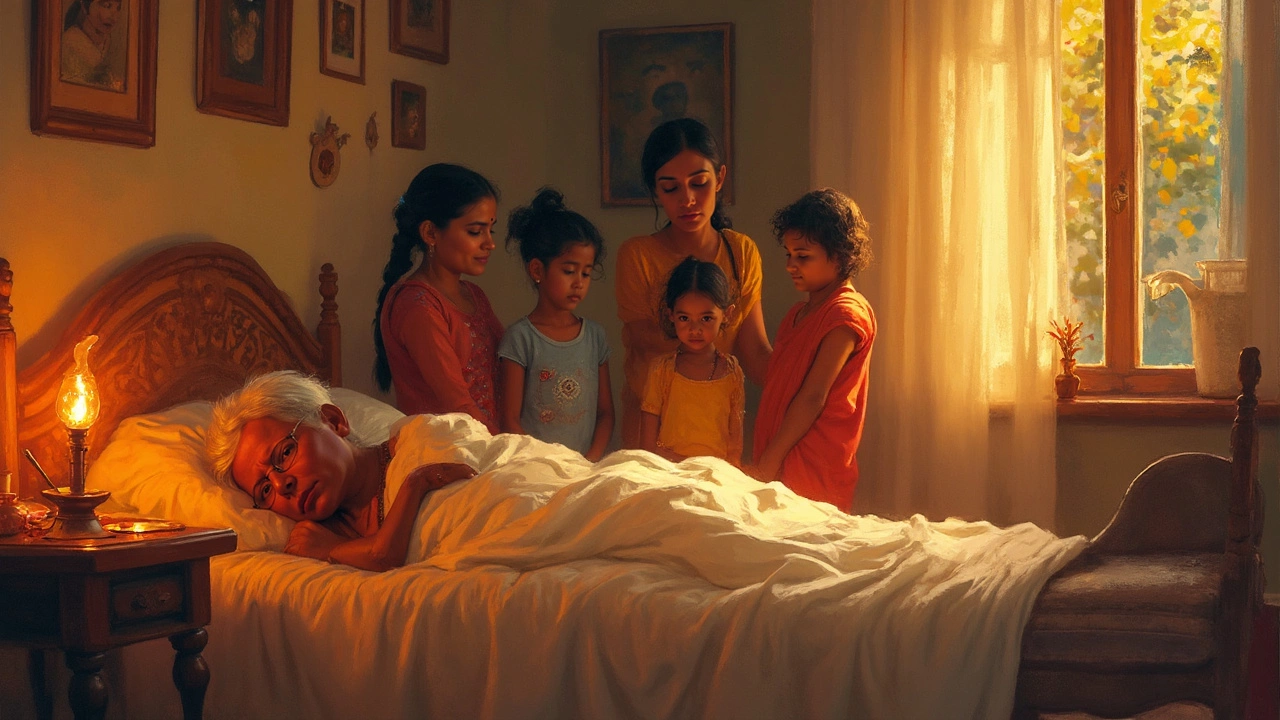Could cancer be hiding in your body for years without you knowing? Here’s what science says about how long you can live with undetected cancer and what signs to watch for.
Read MoreCancer: What You Need to Know Right Now
Finding out you or a loved one has cancer can feel like the ground just fell away. You probably have a flood of questions – how long has it been there? Can you beat it? What will life look like after treatment? This page pulls together the most practical answers from our expert articles so you can get a real sense of what’s happening and what steps to take next.
Spot the Signs Early
One of the biggest tricks cancer uses is staying silent. Tumors can grow for years without obvious pain. Look for subtle changes: a lump that won’t go away, unexplained weight loss, persistent fatigue, or a new cough that lasts weeks. Our guide on "How Long Can Cancer Go Undetected?" breaks down exactly which signals are worth a doctor’s look and why early scans matter.
When you notice something odd, don’t wait for it to get worse. A quick check-up can catch many cancers while they’re still treatable – think thyroid or certain skin cancers that have the best odds when caught early.
Understanding Stages and Survival Chances
Stage 3 and Stage 4 sound scary, and they are, but they mean different things. Stage 3 means a larger tumor or nearby lymph nodes are involved; Stage 4 means the cancer has spread to distant organs. Knowing the stage helps doctors pick the right mix of surgery, radiation, or chemotherapy. Our article "Understanding Stage 4 vs Stage 3 Cancer" explains these differences in plain language so you can ask the right questions at your appointments.
Survival isn’t a one‑size‑fit‑all number. It depends on the cancer type, stage, age, and overall health. Some cancers, like certain thyroid or early‑detected skin cancers, have very high cure rates. Others, like specific pancreatic or brain cancers, remain harder to beat. Check out "How Long Can You Live with Cancer?" for a realistic look at life expectancy across common cancers.
What about recovery after treatment? Many wonder if the body can truly bounce back from chemotherapy. The short answer: it varies. Some side effects fade within months, while others, like nerve damage, may linger. Our "Does Your Body Ever Fully Recover from Chemotherapy?" article gives a step‑by‑step rundown of what to expect and tips to support healing, from nutrition to gentle exercise.
If you’re facing a diagnosis labeled “incurable,” don’t lose hope. There are cancers that currently have no cure, but palliative care, clinical trials, and emerging therapies can still improve quality of life and extend survival. The piece "What Cancer Has No Cure?" details which cancers fall into this group and where you can find the latest research options.
Stories of people beating the odds matter, too. Real‑world examples of Stage 4 survivors show that aggressive treatment, personalized medicine, and a strong support system can sometimes turn a grim prognosis into a fight worth taking. Read "Has Anyone Been Saved from Stage 4 Cancer?" for inspiring cases and practical actions you can start today.
Finally, remember you’re not alone. Whether you’re looking for early‑detection checklists, post‑chemo recovery tips, or hope in advanced stages, the articles on this page give you straight, no‑fluff answers you can act on. Keep this page bookmarked – it’s your quick‑reference hub for navigating cancer with clear, actionable info.
A lot of people wonder if the body can bounce back after chemo, or if some damage is permanent. This article breaks down what really happens inside you after treatment ends, which changes can heal on their own, and which ones might stick around. You'll also find tips for making recovery smoother and signs to watch for if things don’t feel quite right. This isn’t just medical jargon, but practical info from real experiences. Read on if you or someone close to you has questions about life after chemo.
Read MoreSome cancers are tougher than others, but a few stand out as easier to fight—and thyroid cancer leads the pack. This article breaks down why certain cancers respond better to treatment, what sets them apart, and what practical steps you can take if you or someone you care about is facing a diagnosis. You'll find facts about survival rates, early warning signs, and why routine checks matter. Get clear, direct tips on what affects your chances, and learn the real deal about treatment options for the most beatable cancers.
Read MoreSome cancers still have no cure, even with the latest treatments. This article breaks down why certain cancers remain deadly and what that actually means for people diagnosed with them. You'll learn about the types of cancer still considered incurable, what current treatments can do, and where hope and research are heading. Plus, get practical advice for navigating tough news and making decisions. Think of it as a straight-talking guide for a topic that’s as serious as it gets.
Read MoreStage 4 cancer sounds like the end of the road, but for some people, it hasn't been. This article digs into who has survived, why outcomes can be so different, and what treatments actually made a difference. You'll find honest examples, treatment tips, and straight answers about whether recovery is possible. Plus, there are some practical tips for anyone who wants to take action now. It's all about cutting through hype and getting real about what's possible.
Read MoreFacing a cancer diagnosis often leads individuals to question their life expectancy. The answer isn't one-size-fits-all, as it depends on numerous factors including the cancer type, stage, and treatment options. Modern medicine continues to improve survival rates, offering hope and longer life spans. This article delves into the intricacies of living with cancer, exploring survival possibilities and the impact of early detection.
Read MoreRecognizing the signs of a body shutting down due to cancer can be both heartbreaking and crucial for those involved in caregiving or dealing with the illness directly. This article explores common physical and emotional symptoms in such situations, providing practical insights for timely intervention. Readers will learn about changes in sleep, appetite, and mental clarity, alongside guidance on finding the right palliative care options. Understanding these signs allows for improved comfort and care planning at the end stage.
Read MoreStage 3 and stage 4 are both advanced stages of cancer, but they differ in the extent to which the cancer has spread and the treatment options available. Stage 3 cancer indicates a larger tumor or more extensive lymph node involvement. Stage 4 cancer is marked by the spread of cancer cells to distant parts of the body. Understanding these differences is crucial for choosing the right treatment plan and predicting outcomes.
Read More











